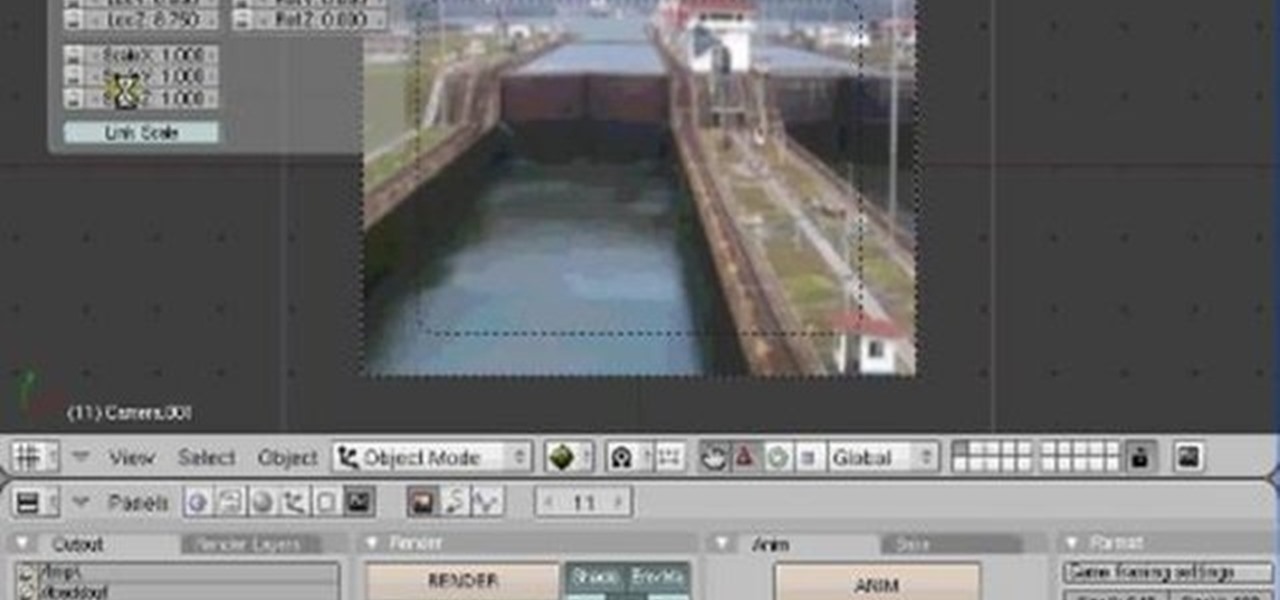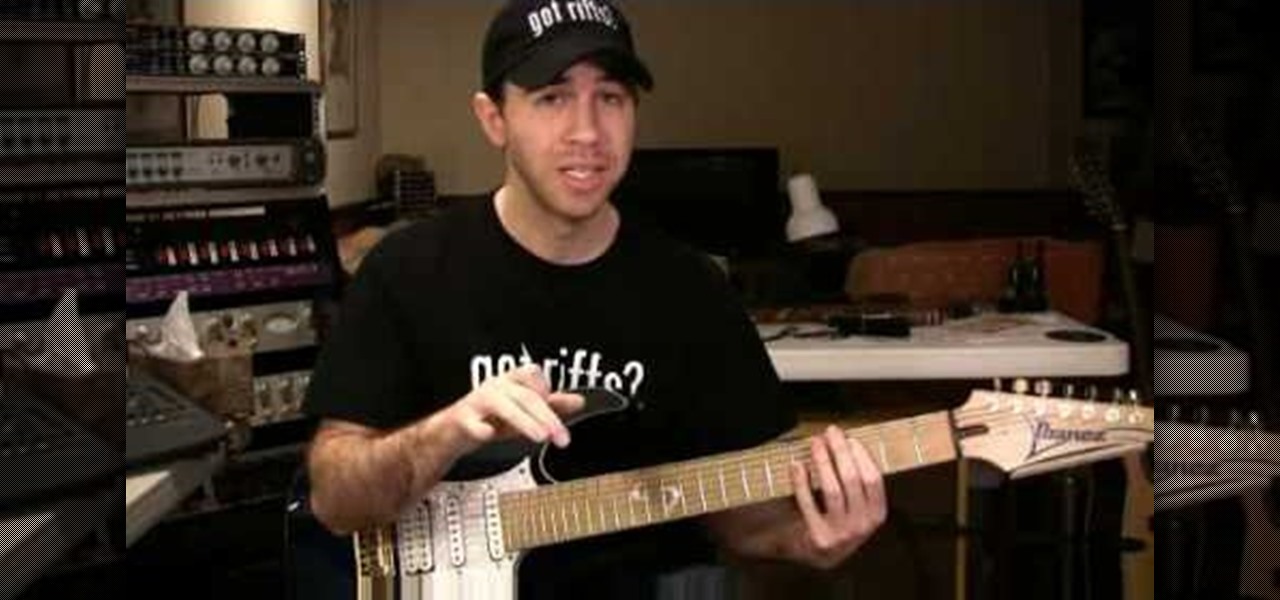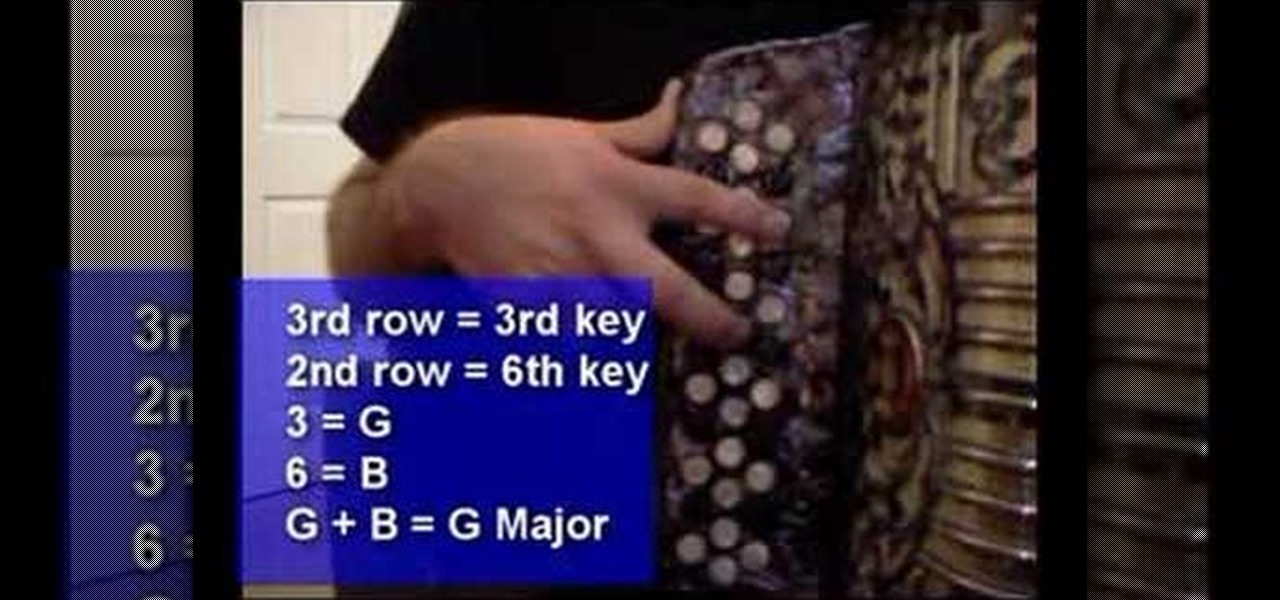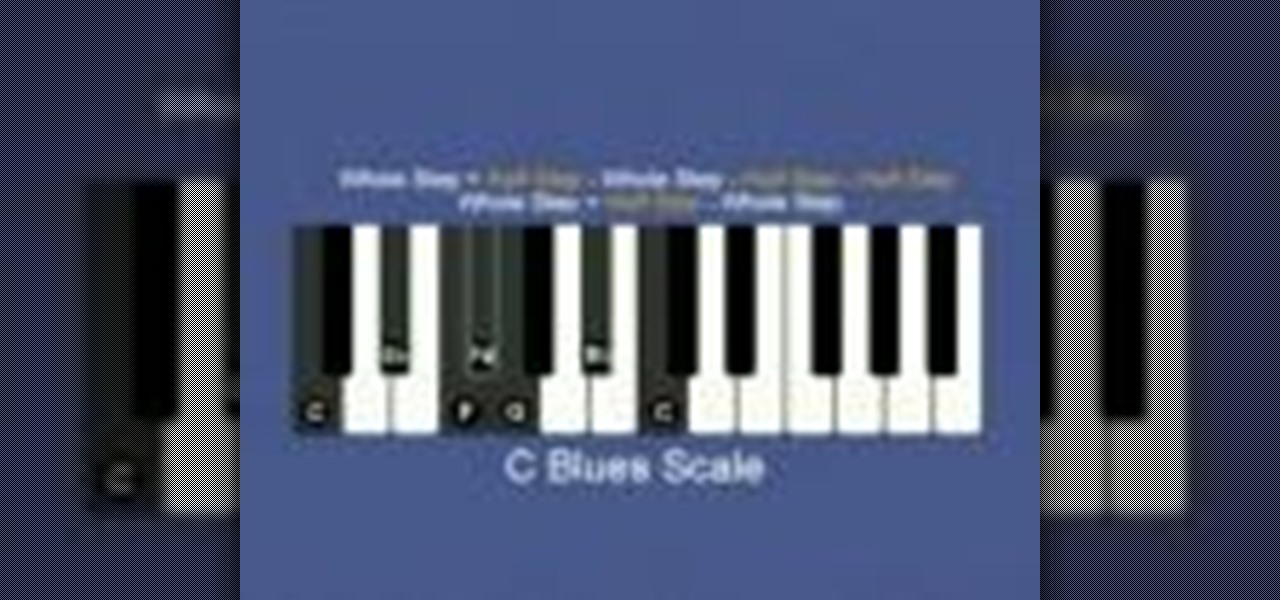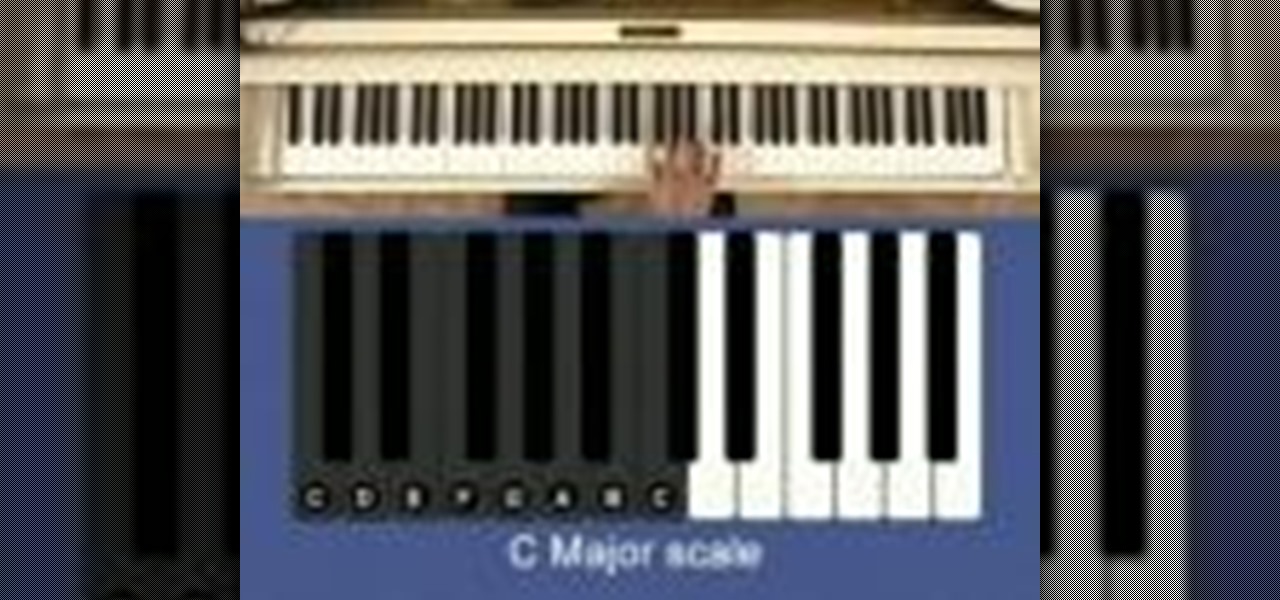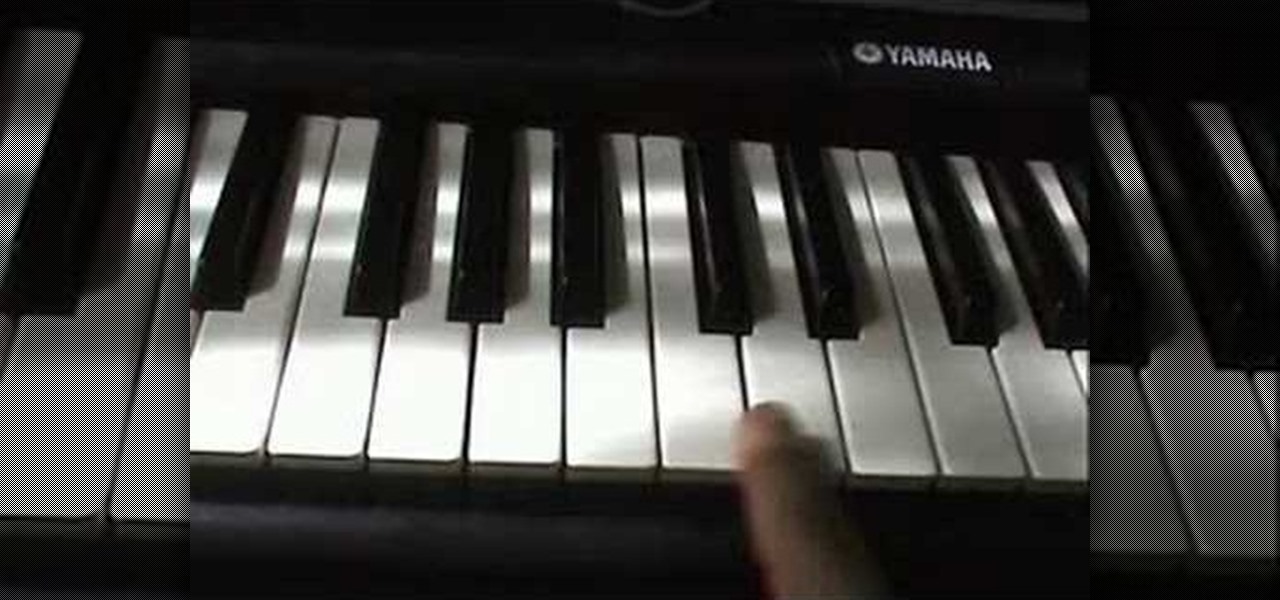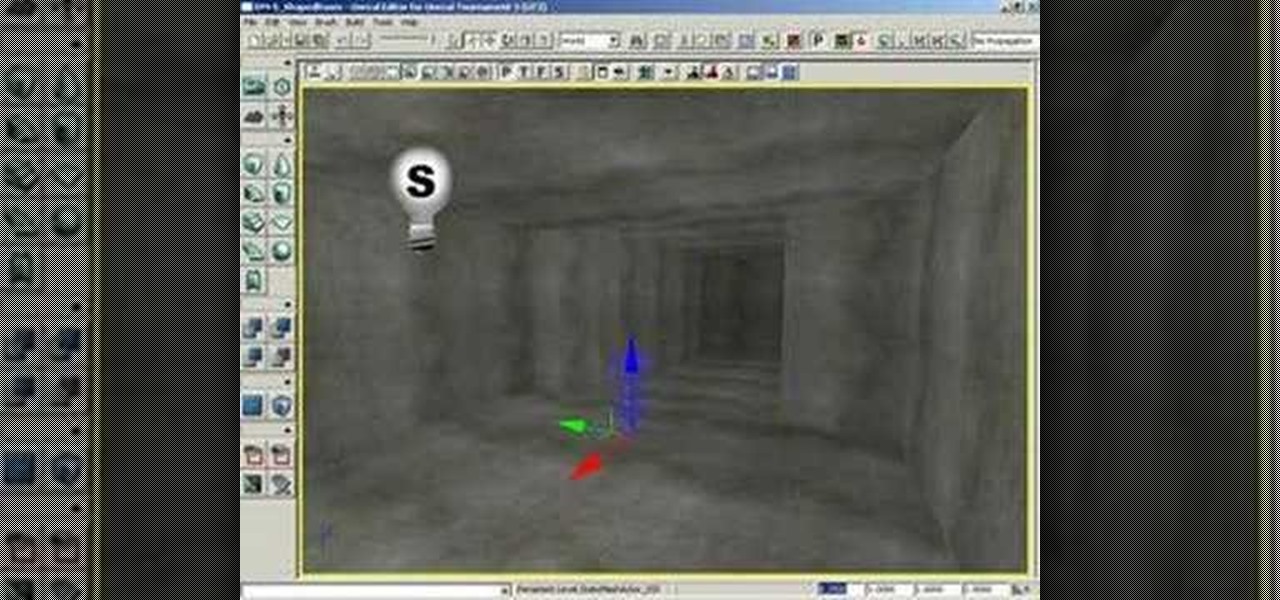
Do you dream of standing on stage in front of millions of fans with a guitar in your hand? You could make this dream come true, if only you could play the guitar! This guitar tutorial series from Robert Renman teaches you the basics of guitar playing along with a few beginner and intermediate techniques. You can learn how to play pentatonic scale boxes with this guitar lesson. This pentatonic scale technique will come in handy when you are starting to play the blues. All you have to do is fla...

This video tutorial show how to make a scaled octahedron. Modular origami varies from regular origami in that it uses multiple sheets of paper to fold instead of just one. Learn how to fold this scaled modular origami octahedron by watching this instructional video.

Rapper Lil' Wayne has admitted he can't read, instead citing that his musical prowress comes naturally to him. While this may work for the musician, most piano players, singers, and sax players can benefit from a lesson in music theory or two.

Drawing scales of a dragon could be difficult so lets try this method. First get the basic shape of the body,then draw those curves under the belly. After that,the scales which are on the top. Now the middle scales come in place. As we are done with our basic sketching,now its time to use a sketch pen for finalization. One can even add some shadows and highlights. This will help you draw some other amphibian as well as mammal figures.
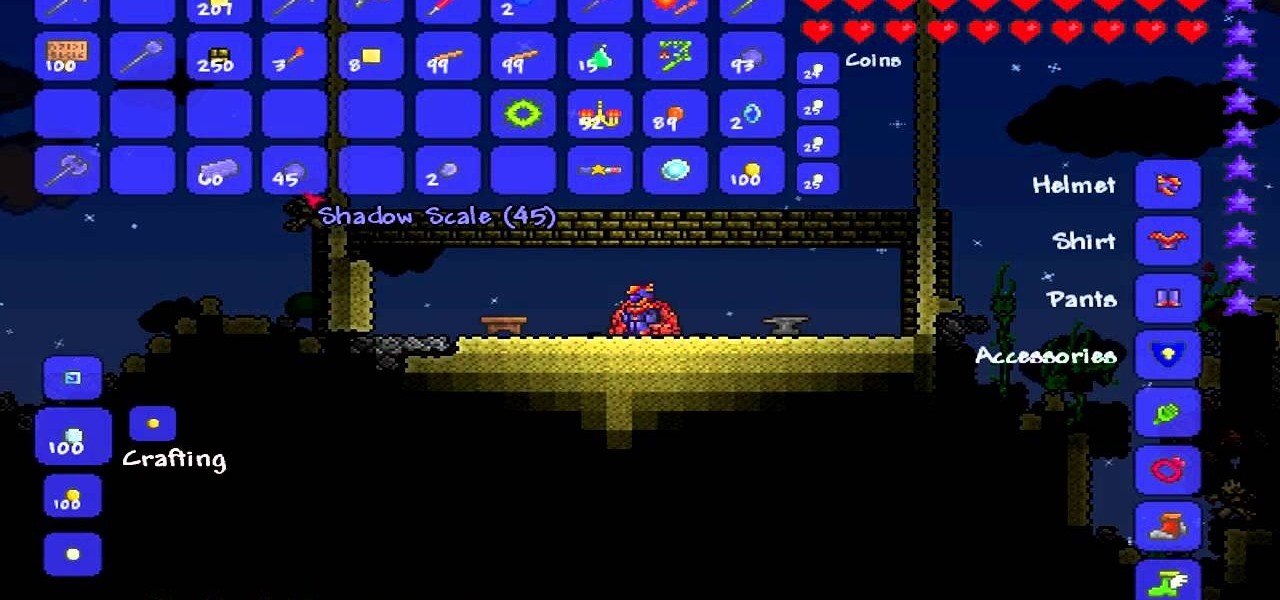
Check out this video to learn how to use your anvil for crafting the shadow scale armour set in Terraria. Your armour set is important, so make sure you've got the one you want by following along with video and crafting shadow scale armour.

Comparing evaluations of the same thing done on different scales can seem difficult, but there is a simple equation you can use to translate something expressed in one numerical scale into another. This video will show you how to use it and make your math life easier.

Using a virtual darkroom analogy, this Blender tutorial explains how to use a Flying Camera rig to crop/scale/distort video. Using a non-orthographic camera, you can scale, rotate and zoom by keyframing the camera location.

In this guitar lesson, learn how to play a chromatic scale on a standard-tuning (EADGBE) guitar. With the guitar, as with any other instrument, if you want to improve, you'll need to practice. Fortunately, the Internet is awash with free, high-quality guitar lessons like this one. For more information, and to get started playing chromatic scales on your own guitar, watch this video tutorial.

Check out this instructional piano video that shows you some exercises to improve the way you play scales (and arpeggios) with a few exercises and techniques. This tutorial is great for beginner to advanced piano players. Practice the scales and arpeggios on the piano and improve your piano playing skills!

Check out this instructional electric guitar video that provides an introduction to modes. Modes are scales that are derived from a parent scale by starting and ending on different degrees of that parent scale. This is Season 3, Episode 14 of Dave Weiner's Riff of the Week series called "The Modes: An Introduction." With this lesson and a bit of practice, improve your guitar playing skills by learning about modes on the electric guitar.

Check out this instructional acoustic guitar video that shows you how to play the 5 Major scale positions every guitar player should know. Ideally, you should work through them in all 12 keys. Improve your guitar playing skills by watching this short tutorial video to learn how to play the five major scale positions on the acoustic guitar.

Check out this instructional guitar video that shows you how to play a G major scale and build on an open G string. Building a G major scale on the open G string is a good exercise to play to help improve your guitar skills. This short lesson is great for advanced beginners who need to practice on the acoustic guitar.

Learn how to play a C Major Scale, learn the diatonic accordion, learn the button accordion, scales in a button accordion

Check out this video from Berkleemusic.com and watch as Larry Bayone, Chair of Berklee's Guitar Department, explains how to find the notes of the guitar scale from memory by practicing the major scale in a variety of different positions and registers on the fret board.

Pete Sears discusses pentatonic scales. He will begin by covering the C major pentatonic scale and playing it on the piano.

Pete Sears gives you a lesson on blues scales for the piano. Get ready for the blues! You should have a good understanding of regular scales first.

Minor modes use the same set of key signatures as major modes; whichever signature corresponds to the step pattern of the natural minor scale is considered the key signature for that minor mode. Here, Pete Sears explains how to play minor scales on the piano.

Major piano scales are composed of a series of five whole and two half steps in this sequence: whole step, whole step, half step, whole step, whole step, whole step, half step. This video starts by showing you how to play a C major scale.

This video lesson will teach you a few standard riffs using the blues scale. Let's review the Blues Scale in the key of A. Remember you can use this scale over major or minor chords. It all depends on the sound you are going for.

There are many reasons you might want to increase your text size in Google Chrome. The browser's accessibility options have a few tools to help the readability of text on websites. Changing the text scale, enabling zooming, and toggling the simplified view can customize Google Chrome to be perfect for you.

In this tutorial, we learn how to draw small faces on paper. This is best for drawing on comic books, because the faces are smaller than on regular drawings. First, give yourself a scale size to see how large you want the faces on the paper to be. If you are new at drawing, use the square method to learn how to measure the face and learn how to draw the face so the body is scaled to the size of the head. Start out by drawing the head and adding in shading details. You will start with the guid...

This video illustrate us how to play " Yankee Doodle" on the piano. Here are the following steps: Step 1: First of all take the piano and then slightly brush your hands from right to left and then from left to right.

In this how to video, you will learn how to play the Mixolydian piano mode. For this example, the C major scale will be played. The 5th mode of this scale starts on the G note. From these modes, 7th chords can be built. You can build 7th chords by skipping every other note on this scale. This is a G7 chord. If you were to play the E major scale, you would start on the 5th note. This is B. Now, play every other note from the B to create a B7 chord. You now know how to use and play the Mixolydi...

This video teaches how to build up finger speed on the piano. First they start off with simple exercises. The five note scale starts with middle C, and plays the five notes up to G and back down. The key to building up speed is to start off slow. Make sure all of the keys are the same volume and then go faster. Now use your other hand. Then use both hands to make the high f octave scale. Change it up by adding a blues song scale, this is useful for playing a blues song and adding a fun sectio...

This is a video guitar lesson brought to you by andrewwasson.com, and is Part 1 in the series "Harmonized Moveable Chord Shapes". This video lesson covers how to study chords on the guitar neck, and how to practice playing harmonized scales using both triad and seventh chord qualities. The idea taught here works well, because the harmonized major scale gives you most of the popular chords in today's music. These include: the Major Triad & Major Seventh, the Minor Triad & Minor Seventh, the Di...

This banjo tutorial goes over working with a two note melodic scale in G major to form ideas for licks. This lesson teaches you improvisational techniques on the banjo. You will also learn the 3 different types of the melodic scales. Watch this how to video and you will be able to play banjo licks on a two note melodic scale in G major.

Check out this two-part video tutorial on learning some components and polyprimitives of vertices in Autodesk Maya 8.5. You'll get the best info on geometry for 3D animation in this 3D modeling video. See how to scale, rotate, and move vertices of your built animated character in Maya.

This tutorial teaches you how to use the draw scale fields and draw scale 3D fields in Unreal Tournament 3 Editor.

Adam Gussow (of Satan and Adam) explains the blues scale and offers practice tips and inspiration to the harp player in search of self-transformation.

In this lesson by Peter Vogl we'll explore cross stringing scales. A cross stringing scale differs from a normal scale in that we play the same notes, but on different strings. Cross stringing is a good country technique.

Alright, let's be honest, blues guitarists can get stuck in a riff rut and then everyone ends up singing the blues. In this video, Robert Renman shows you how to break out of the mold and bring some life into your licks. Using the A Minor blues scale, Robert shows you how to create interesting phrasing and ideas to let you put your own stamp on a long, long tradition.

In this clip, you'll learn how to perform a simple scale warm-up exercise for the ukulele. If you want to get really good at playing the ukulele, it stands to reason that you'll need to practice. Happily, the Internet is awash in high-quality video lessons like this one from the folks at Ukulele Underground. For more information, including a step-by-step overview, watch this free video ukulele tutorial.

In this clip, learn how to play major scales on the ukulele. If you want to get really good at playing the ukulele, it stands to reason that you'll need to practice. Happily, the Internet is awash in high-quality video lessons like this one from the folks at Ukulele Underground. For more information, including a step-by-step overview, watch this free video ukulele tutorial.

Adobe Photoshop's got some great tools to make your photos look excellent. This video tutorial will show you how to use the content-aware scaling feature in Photoshop. This feature helps you resize content without changing the most important visual content. Once you see the beautiful, gorgeous results, your mind will be blown.

Whether you're new to Adobe's Creative Suite or a seasoned graphic design professional after a general overview of Adobe Illustrator CS5's most vital new features, you're sure to be well served by this from the folks at Lynda, which presents a detailed, step-by-step overview of how to use Illustrator's 9-slice scaling options.

Charles Sedlak shows you the pentatonic blues scale, consisting of five notes. You definitely need to know these, if you want to hit some awesome riffs.

I collect straight razors from the Victorian era and then add some steampunk style. Step 1: Remove the Old Scales

Music theory, for any musician, is EXTREMELY important to know if you expect playing in any form of professional capacity. But if you can't afford to go to Berklee College of Music or Musician's Institute, then you can get almost the same education in this great video! In this video you will learn the basics of the minor Blues scale, 12 tone technique, polychords, chordal chords, and tone clusters. Truly amazing work and make sure you have a pen and piece of paper to take notes!

There's no getting around it: if you want to get good at playing the ukulele or any other instrument, you'll need to practice. Fortunately, the Internet is awash in free uke lessons, like this one from Ukulele Live, which make the task not only easy but fun. This clip, in particular, demonstrates how to play an D minor scale from various positions on the ukulele's neck.

There's no getting around it: if you want to get good at playing the ukulele or any other instrument, you'll need to practice. Fortunately, the Internet is awash in free uke lessons, like this one from Ukulele Live, which make the task not only easy but fun. This clip, in particular, demonstrates how to play an E minor scale from various positions on the ukulele's neck.








